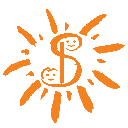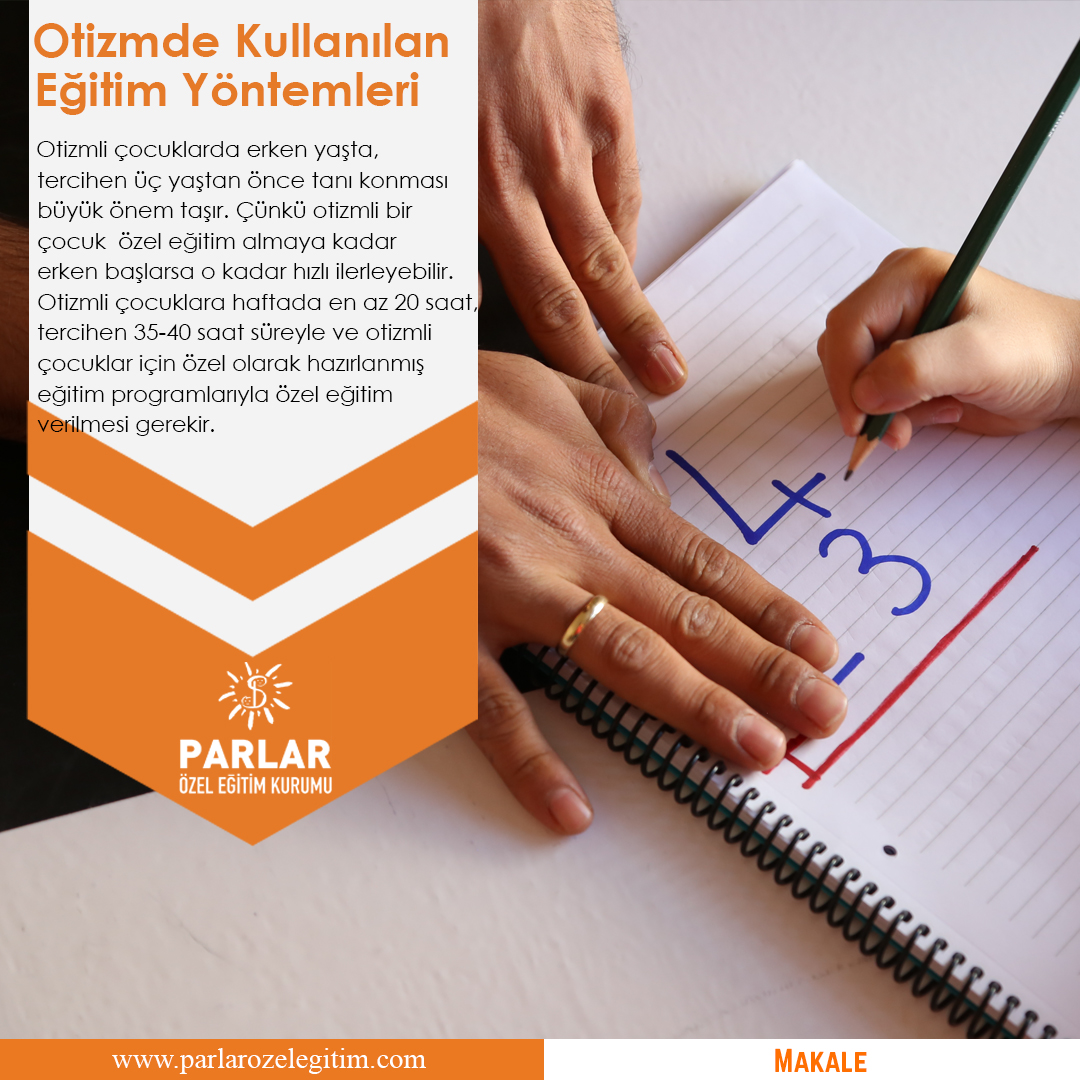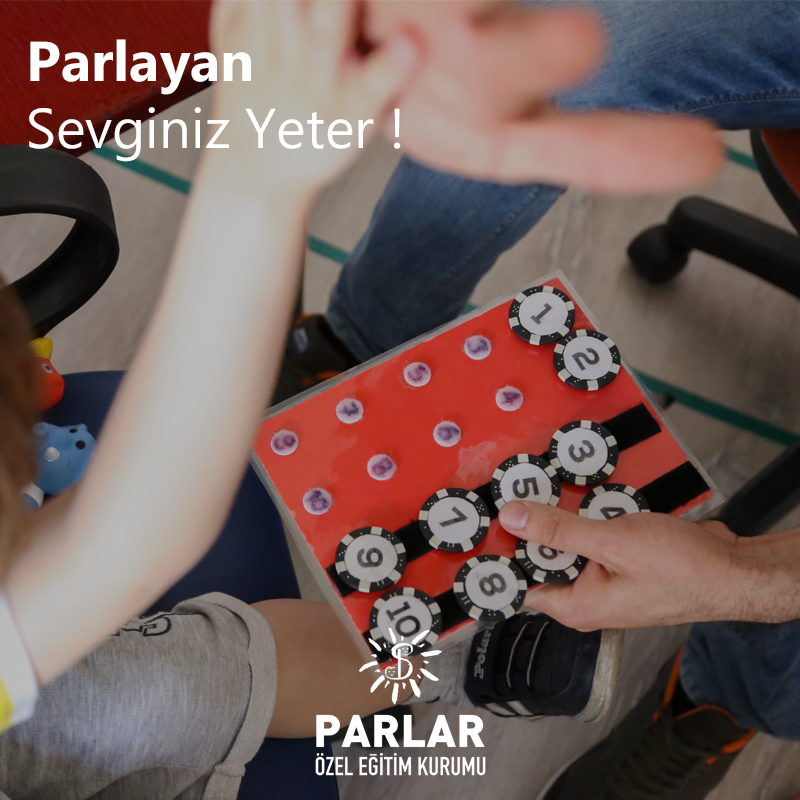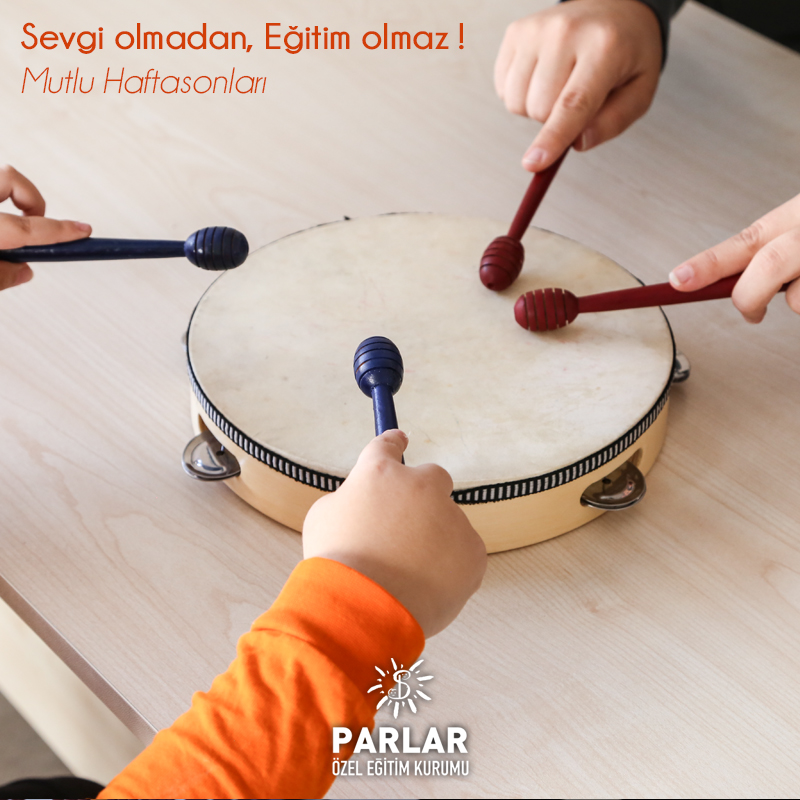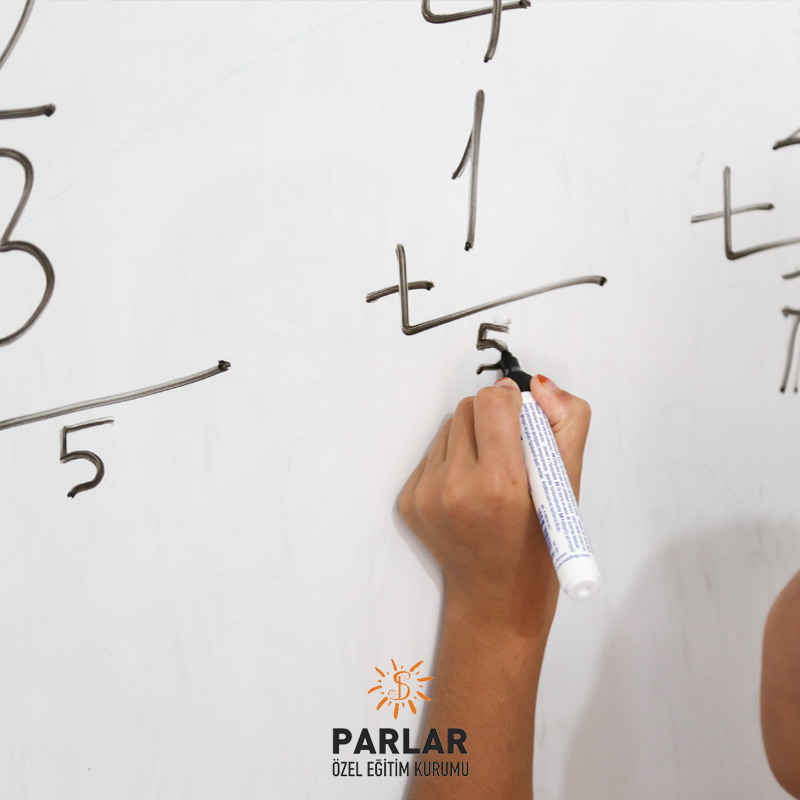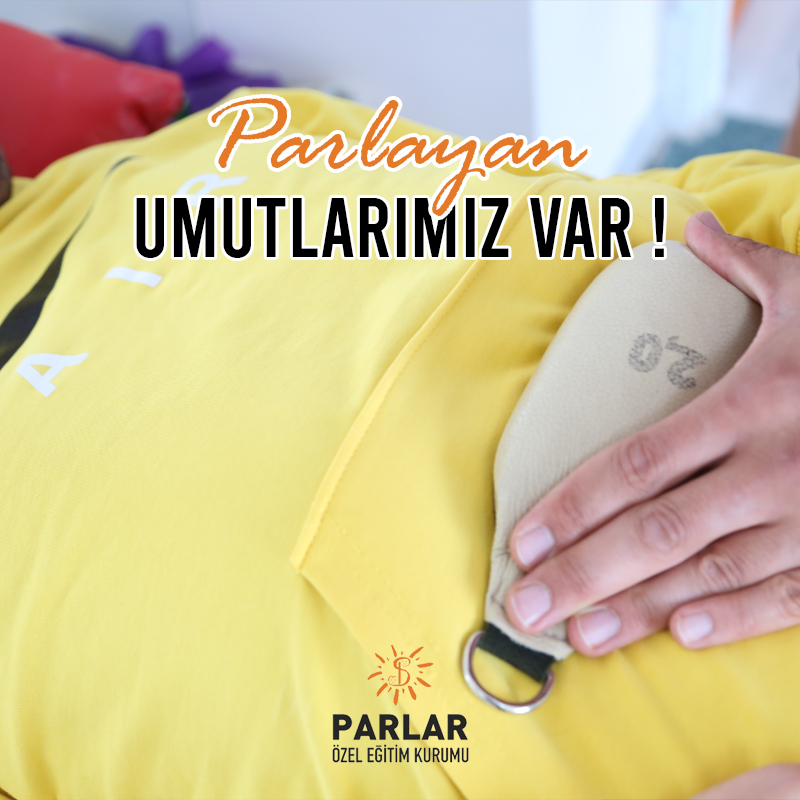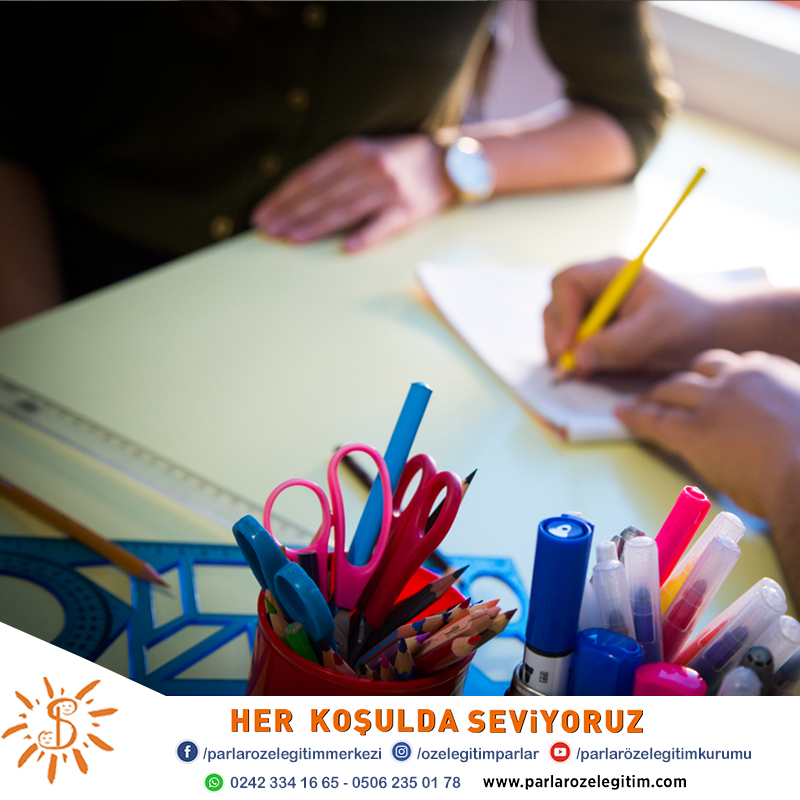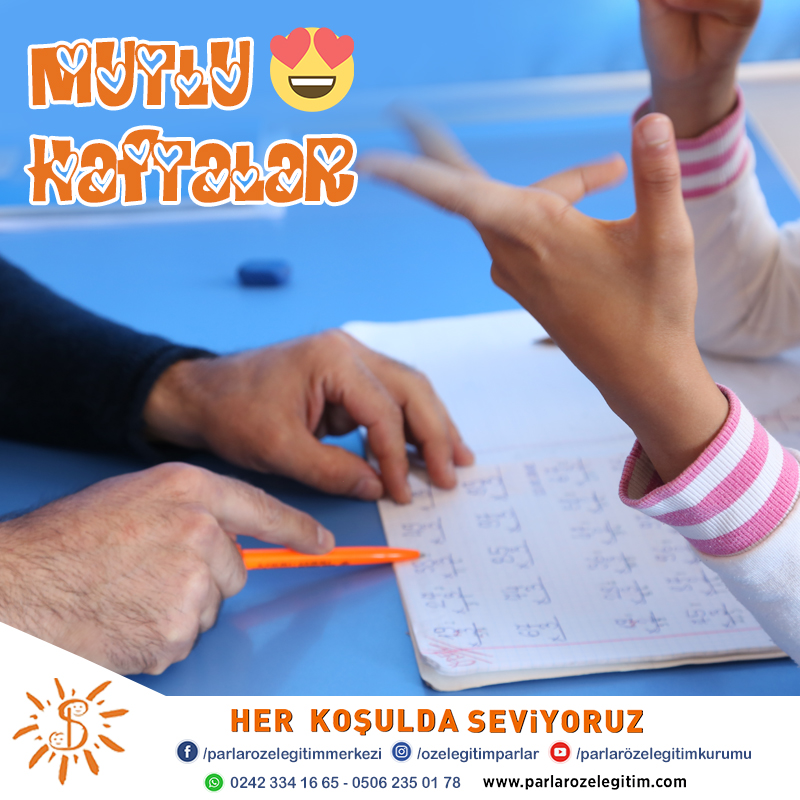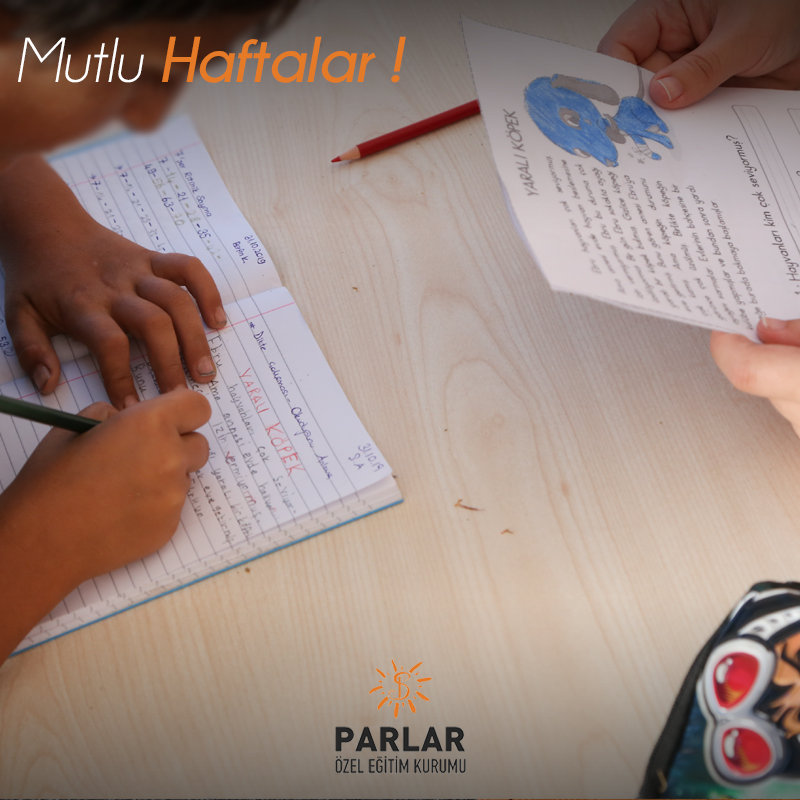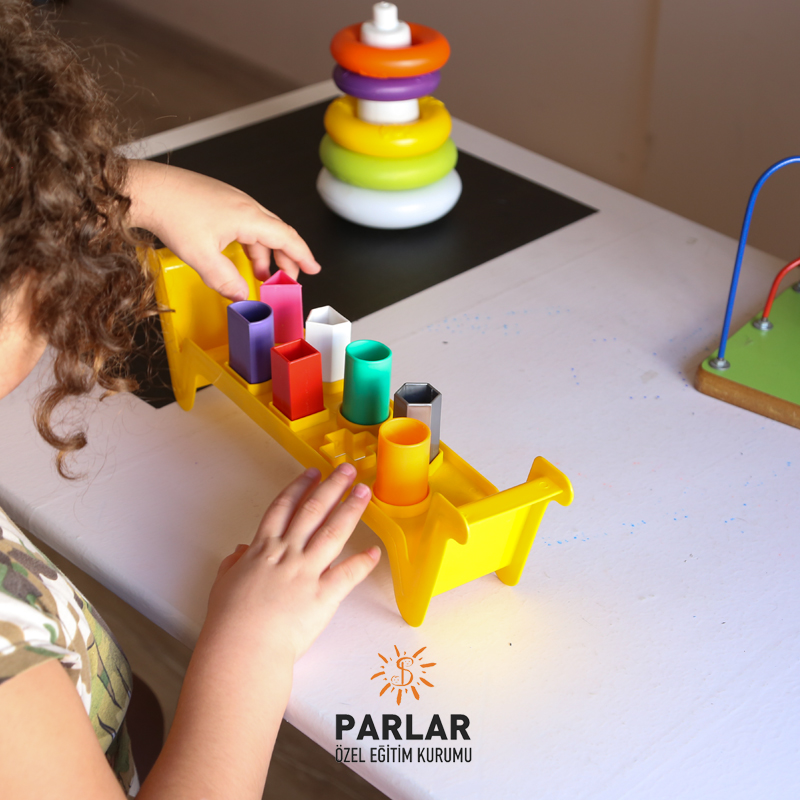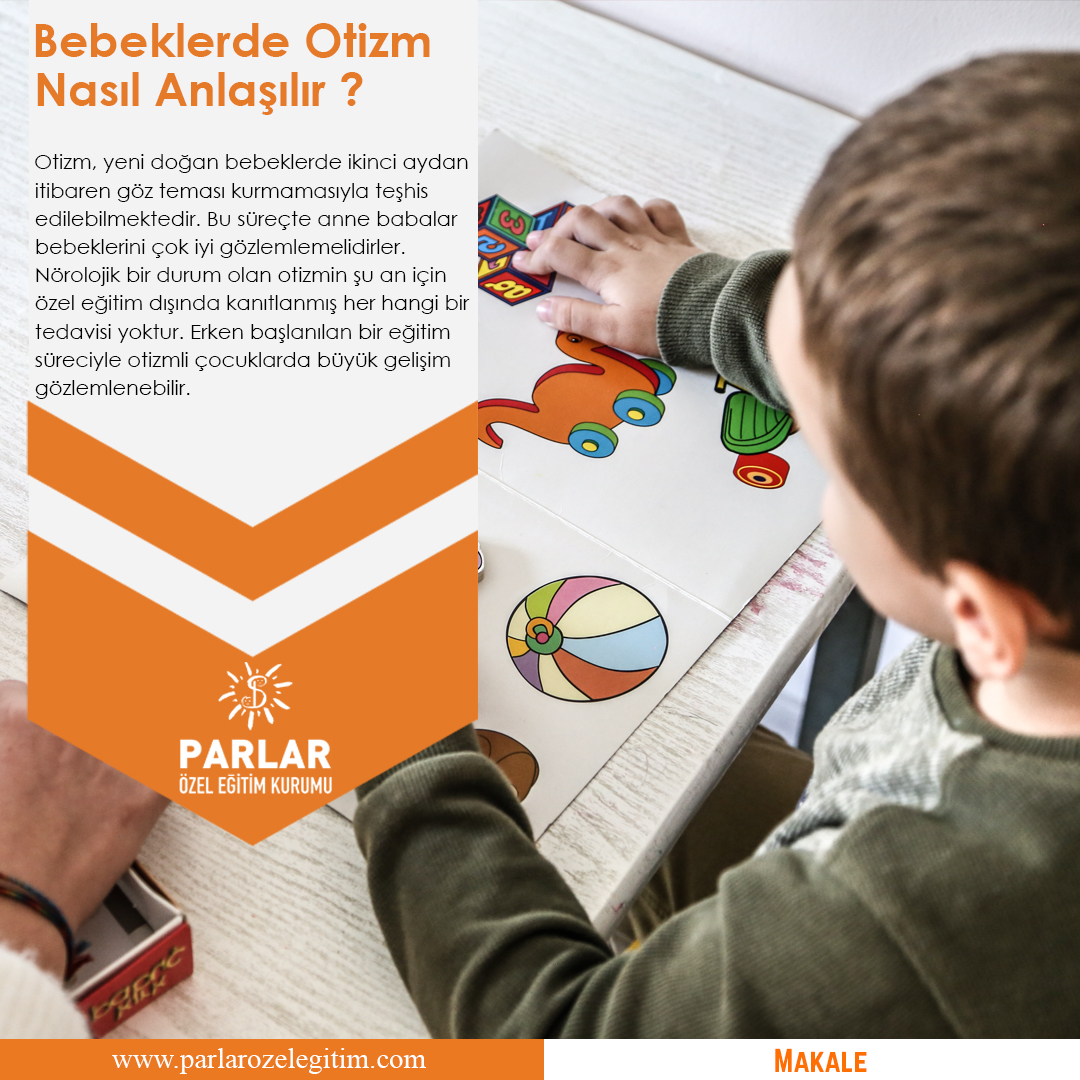PHYSICALLY Disabled For any reason in the prenatal, birth order and postpartum period, the person who has difficulties in adapting to social life and meeting his daily needs due to disorders in the skeletal (bone), muscle and nervous system, loss of bodily abilities to various degrees and who needs protection, care, rehabilitation, counselling and support services is called orthopaedic disabilities and the situations that lead to this condition are called orthopaedic disabilities. Every parent wants their child be healthy.
Types of Physical Disabilities and Diagnostic Treatment
Apart from hereditary diseases from the family, almost all of the disability caused by a number of omissions, inexperience, lack of knowledge, etc. can be prevented or controlled. Keep in mind that your child's bodily incompetence can negatively affect his or her entire development.
If the child is not crawling, walking, or cannot sit, his interest in his environment will be limited accordingly. In the slightest doubt, your child's bodily insufficiency will be able to prevent your and your child's lifelong unhappiness with early diagnosis and intervention by contacting the relevant health centre in the slightest doubt.
Some of the Orthopaedic Barriers
A- Congenital obstacles
1- Congenital limb deficiencies,
2- Congenital hip dislocation
3- Crooked foot,
4- Congenital arm paralysis,
5- (Meningomyelocele),
6- Conjoined finger,
7- Congenital curvature of the spine,
8- Congenital muscle diseases.
B- Cerebral palsy
C- Ongoing bone and joint inflammations
D- Rheumatic diseases
E- Polio
F- Spine Curvatures
G- Traumatic obstacles
1- Loss of limbs,
2- Absence of broken boiling,
3- Wrong boiled fractures
4- Joint stiffness,
5-Trauma-related paralysis and loss of strength,
6-Joint calcification.
H- Hereditary progressive nervous diseases
I- Dwarfism
A- Innate Obstacles
1- Congenital Limb Deficiencies
Description:Occurs when limbs such as fingers, hands, arms and legs are not congenitally partially or completely formed.
For example, in an absence from the elbow, there is completely no limb below the elbow; it's called a congenital amputee.
Why ;It is the mother's use of medications that are inconvenient to use early in pregnancy (the first three months).
Some cases occur hereditarily.
Diagnosis:Limb absences are easily recognized as soon as the baby is born. Sometimes diagnosis can be difficult if one of the double bones in the limb is absence or under-developed. This should be suspected if there is significant distortion and shortness of the hand, foot, elbow or knee, curvature of the bones.
Treatment : Prosthesis can be made from an early age (often at the age of walking). Thus, the child's ability to use prosthetics is provided. If prosthesis is performed at a very advanced age, the child who adopts walking without prosthesis or doing his/her work with his injured arm may refuse to use the prosthesis. Sometimes the short limb may need to be extended by surgery. In this case, the family should contact the nearest full-fledged hospital and get the necessary help.
2- Congenital Hip Diseases
Description:It is the condition that occurs in the joint due to inadequate development of the hip joint before birth, at birth or sometime after birth. It is much more common in girls than in boys.
Why ;Many factors play a role. Structural disorders in the baby's hip joint cause the hip joint to come out easily. Abnormal posture (side or reverse posture) in the baby's womb is difficult for the hip joint. Swaddle of the baby is the most important cause of hip disease.
Diagnosis:When the baby is born, it is noticeable that the skin lines (folds) in his leg are not symmetrical, that is, normally the skin folds on the legs should be at the same levels and number. The leg on the one side may be short compared to the other. When both legs are tried to open to the sides, it is seen that the disillusioned side does not open side-to-side (limitation of movement). If the disease is two-sided, it is noticed that the separation of both hips are limited. When the baby is 1 month old, a definitive diagnosis can be made by a hip ultrasound performed by the doctor. The earlier this disease is diagnosed, the better the chance of treatment. Babies diagnosed in the first 1 month are the luckiest. In some patients, the diagnosis is made after the child has reached the age of walking and even started walking. These babies walk late, and if the disease is one-sided, there is shortness on that side, and there is a glitch in walking. If there are these findings, the baby should be taken to a full-fledged hospital in no time.
Treatment :Treatment should be directed by the doctor. Arson should never be carried out. In the period of 0-2 months, thick intermediate glands or commercially sold pillows should be used to keep both hips apart.
3- Crooked Foot
Description:It is seen that one or both feet are introverted and bent with their heels. The flexible one is improved with plaster and exercise applications sometime after birth, while the hard one is fixed by surgery.
Why ;It is seen that one or both feet are introverted and bent with their heels. The flexible one is improved with plaster and exercise applications sometime after birth, while the hard one is fixed by surgery.
Diagnosis:Mostly as soon as the baby is born, disfigurement in the body is noticed. It is more common in babies with congenital hip disease appears. It is observed that the soles of both feet are facing each other, the heels are facing inward, and the feet are bent from the elbow to the ground.
Treatment :As soon as the disfigurement is noticed, that is, the treatment begins when the baby is born. Corrective movements are taught to parents by experts on the subject and made to make the baby do it. Parents have a lot of responsibility. Usually, after the first 10-14 days are passed with these exercises, plaster therapy is initiated by the orthopaedic specialist. One or more surgical interventions may be required at different stages of treatment and especially in very serious disorders. Surgery is absolutely necessary in patients who start treatment late (especially after 6 months). After surgery, regular medical follow-up should be performed with exercise, orthopaedic and appropriate shoes until the child reaches adult age.
4- Congenital Arm Paralysis
Description:It is a paralysis table that occurs due to damage to the nerves leading to the arm during childbirth. It's one-sided. There may be a complete paralysis in the affected arm or it can be predominantly watched by the weakness of the muscles in the hand or around the shoulder. In the type usually seen, the shoulder perimeter is held, while the strength in the hand is normal, the movements of the shoulder joint and arm are limited and weak.
Why ;Manoeuvres performed when delivering a baby in difficult births caused by the overlimit of the baby, reverse posture in the mother's womb, prolongation of the birth action cause a nervous breakdown in the baby's arm and the nerves leading to that arm. Permanent nerve damage and paralysis occur.
Diagnosis:It is easy to make the diagnosis. It is noticed that the baby is unable to move the affected shoulder and arm, and the arm is facing inward. If the paralysis in the hand is severe, it is seen that the hand is bent from the waist, the arm is introverted and cannot raise its hand. In the heaviest type, there is no force on the arm and hand.
Treatment :While it is possible to heal slightly damaged nerves close to full, some children have no healing or partial healing. If movement is not developing, surgeries for nerve repair should be performed in the early period. In the future (5 years of age or older), if the nerve does not heal and there is a disfigurement in the arm or hand, surgeries can be performed to correct these disfigurements and to provide function (not for nerve repair). Exercise treatment is extremely important. Parents should consult a physiotherapist who works on the subject at the direction of the doctor who follows the child to learn the exercises required for their children.
5- Outward Emergence of Congenital Spinal Cord in the Form of Amplifiers ( Meningomyelocele )
Description:It is a disease in which the spinal cord and spinal fluid in the baby's waist or back region hernia in the form of an outsider and cause paralysis in the patient's legs to varying degrees of single or double sides. In some patients, it may occur that the cerberin fluid accumulates in the brain as a result of blocking the circulation and remaining closed in the brain, and the head grows (hydrocephalus). It is a condition that can seriously hinder brain development.
Why ;It has been shown to occur hereditarily in some patients. Again, it is more common in babies of mothers who take insufficient vitamin B12(folic acid) during pregnancy.
Diagnosis:It is possible to notice the disease during the 16th -18th gestational weeks with blood test and ultrasound examination. Early diagnosis can also be made by taking Amnion fluid (gestational fluid in the uterus). If this condition is detected in the first three months of pregnancy, the pregnancy can be terminated at the request of the family. Since the spinal cord is affected, it is seen with different disorders that are not easy to recover hard in the spine, hips, knees, ankle-feet and the inability to hold urine and faeces in some patients. In mild involvements (the lower levels of the spinal cord), children can walk without any device support. In case of moderate spinal cord damage, the child can walk with auxiliary devices (walker, crutch, orthoses). Crooked foot in the foot, extrovert, arc height, knee bending depending on the muscles held in the knee, "X leg", "O leg", various stiffnesses in the hip (such as the hip remaining extroverted or bent), half disseverance or dissecans of the hip, curvatures of the spine. The presence of foot, knee and hip disorders with loss of sensation, strength or paralysis in the child's legs make the diagnosis.
Treatment :Surgery for the cyst should be performed urgently in the first 24 hours after birth. Gaining independent walking should be one of the most important goals. In serious cases, it should be the aim to maintain standing balance or to maintain seating balance if it cannot walk. Approximately 40% of children with myelomeningocelate are unable to walk in adult age. 'Foot-ankle' or 'ankle-knee orthoses’, crutches, walkers are very helpful in treatment. Surgery can be performed to correct foot-ankle, knee, hip and torso disorders in patients who are thought to benefit from surgical treatment.
6- Conjoined Finger
Description:It occurs when two or more of the congenital fingers or toes remain adjacent due to the defect of not being separated from each other. The simple type is only common to the skin, while the complex type of bone is also common.
Why ;15-40%of patients have conjoined fingers in other individuals in the family. Therefore, hereditary transition has an important place in the emergence of this disfigurement.
Diagnosis:It is quite easy to make the diagnosis when the baby is born. Simple-complex separation is made by X-ray filming.
Treatment :It is quite easy to make the diagnosis when the baby is born. Simple-complex separation is made by X-ray filming. Surgical intervention is not urgent. Parents should massage the conjoined fingers and stretch the skin in between to facilitate future surgery while the child is growing up. Surgery can be performed later on fingers close to each other (2,3,4). However, it must be carried out before school age. In the adhesions between the 4th and 5th fingers and the 1st and 2nd fingers, the surgery should be performed preferably before the age of 3, as deformity emerges in the long fingers (2nd and 4th) develops over time.
7- Congenital Muscle Diseases (Muscle Melting)
Description:It is a group of diseases that occur from birth, which are followed by deterioration in the structure of the skeletal muscles and the progressive muscle weakness related to it. Muscle weakness, as well as joint stiffness, deformity and progressive disability can occur.
Why ;Hereditary transitional diseases. The incidence increases due to relative marriages. There is progressive melting of the muscles.
Diagnosis:The baby may be of normal appearance at birth. However, in the following months and years, the disease will appear more prominently and become increasingly severe. When muscle melting reaches 30-50%, weakness in the arm and leg muscles attracts attention. These kids usually walk late. The walking age usually lasts 18 months. When the child is 3-5 years old, it is seen that he has cumbersome walking, difficulty climbing stairs, a significant difficulty getting up from his seat or sitting where he lies, sometimes even failing to achieve them. At the latest, the muscles of the neck, hips and shoulders are held. Muscle weakness, which begins from the shoulder and hips, gradually spreads. The child is slightly bent in the hips and knees (like ducks) and walks at his fingertips, removing his waist excessively forward so as not to fall due to his weak muscles.
Treatment :The child who was able to walk before becomes increasingly wheelchair dependent over the years. From the moment the disease is diagnosed, the child should be followed up with intensive physiotherapy program and taken to the family education program. The aim of orthopaedic treatment is to prevent joint stiffness and disfinement, to relax the developing muscle and joint stiffness if necessary, thus trying to help the child to survive and walk. Usually after loosening surgeries, orthz should be applied. Since scoliosis (curvature of the spine to the sides and disfigurement seen by rotation with it) is generally not developed in children who can stand and walk, efforts are made to keep the child on their feet long as possible. After scoliosis begins to form, it usually moves quickly and reaches a level that disrupts the sitting balance of the child, even disrupting respiratory function. The family should be aware that corsets should be used to ensure the child's spinal balance. In addition, the family should not disrupt their regular control in terms of regular orthin control, regular follow-up of X-ray films, monitoring of increased curvature of the child's spine and monitoring the effects of curvature on other systems.
B- Cerebral Palsy (Spastic Paralysis, Cerebral Palsy)
Description:Prenatal, birth order or early childhood after birth (0-7 years) is a disease that occurs with walking, movement and posture disorders due to damage to the brain. In some cases, retarded intelligence can accompany the disease. Cause: The causes of brain damage are effective in three periods: prenatal period, birth, postpartum period.
Prenatal:One of the reasons is infectious diseases such as rubella, which the mother suffers during pregnancy. Other causes include early separation of the pouch (child partner, placenta) from the mother's womb, placenta failure, mother's pneumonia, heart-lung disease in the mother, blood type incompatibility, mother's alcohol and drug addiction, diabetes.
Birth order: Difficult and prolonged birth action can also increase the risk of cerebral palsy. These are effective by causing the baby's brain not to receive enough oxygen. Birth trauma can cause intra-brain bleeding in the baby. Abnormal arrival positions of the baby at birth (e.g. arrival of a scissor) can cause difficult birth and therefore oxygen deprived. Other risk factors in this group include twin pregnancies, premature births (premature), low birth weight.
Postpartum: Brain inflammation, meningitis, high fire-related convulse of the child, brain trauma (thinking) are the most common causes in the postpartum period. Traumatic causes include traffic accidents, falling from a height and beaten children. These cause bleeding in the brain. Children who are saved from drowning will also develop cerebral palsy if the brain is deprived of oxygen.
There are four types of c brain paralysis that occur in the area of the brain that are held. Usually, spastic type occurs. Spastic children have excessive contraction(spasticity)in the limbs held in whichever muscles are affected. For example, if you want to use in a spastic child where the legs are affected, bending of the knees and hips and the knees in the bent position can be seen hitting each other while walking. There are four types of c brain paralysis that occur in the area of the brain that are held. Usually, spastic type occurs. Spastic children have excessive contraction(spasticity)in the limbs held in whichever muscles are affected. For example, if you want to use in a spastic child where the legs are affected, bending of the knees and hips and the knees in the bent position can be seen hitting each other while walking.
In brain paralysis, paralysis can be seen in a single limb, as can be seen in all 4 limbs. In addition, the same side arm and leg are affected in the type called hemiplegia. There may also be cases when both legs are affected more or less than both colas. Spastic types may also have bends due to excessive muscle contraction in the elbows, elms and hands. Scoliosis occurs often. It is easy for these children to diagnose both joint and walking disorders. Some never walk. Besides the spastic type, there are also types that are tremors, unstable and uncoordinated walking.
Treatment: The damage to the brain is permanent and without treatment. Musculoskeletal disorders and normal movement system development (head-neck control, rotation, sitting, crawling and walking) recurring due to damage to the brain. Intensive and regular rehabilitation programs should be initiated from the moment they are diagnosed for normal movement system development. In parallel, family education should be given. Skeletal system deformations can be partially corrected by exercise, orthes or surgeries. The purpose of treatment varies depending on the weight of the disease and the condition of the patient. It is tried to make it better to walk by correcting the de-shape disorders in a patient who can walk. It is aimed to make a wheelchair-dependent person sit better, transfer from one place to another, or even, if possible, make it walk with the help of crutches, make a bed-dependent person sit more balanced, or make personal care and hygiene better.
Surgical treatment is most commonly applied in patients with spastic cerebral palsy. Not every cerebral palsy patient is eligible for surgery. Therefore, patients should be evaluated very well by the orthopaedic specialist. A patient who does not have the potential to walk should not undergo a large number of unnecessary surgeries for this means. Sometimes surgical interventions performed when the child is young can make orthz application and physical therapy more effective. It is usually the correction of multiple disfigurements at the same time in a recommended surgical procedure (hip, knee, ankle). However, successful surgeries performed at an early age may have to be repeated in the future because the child is growing up. Sometimes, during the course of medical treatment, surgical intervention may be required if the result expected from the treatment is not obtained. The correct decision must be made to determine whether it is necessary and, if necessary, its timing. Postoperative rehabilitation is just as important as the success of the surgery. Treatment-follow-up should last until skeletal development is completed.
C- Ongoing Bone and Joint Diseases (Chronic Osteomyelitis, Septic Arthritis)
Description:Inflammatory diseases of bones and joints caused by bacteria. Bacteria settle in three ways of bone or insertion:
1-From an inflammatory chamber in the body (such as tooth abscess),
2-During orthopaedic surgeries,
3-After open fractures.
First inflammation occurs where the bacterium settled, then abscesses. Following this, the bone and joint tissue begin to deteriorate. With inadequate treatment, it becomes ongoing (chronic).
Why ;It is caused by bacteria reaching bone or appeasing in some way and multiplying here, causing inflammation, and this inflammatory event becomes incurable and lasting. Diagnosis: There may be pain, swelling, redness and increased heat in the joint or bone. Usually there is a discharged wound on the skin on the held area, where the abscess inside flows out. Because the disease is lasting, sometimes there can be pain, sometimes just discharge. Ongoing arthritis destroys the articular cartilage, desolates , causing the joint to become painful and its movements restricted. The diagnosis is confirmed by examining X-ray films, blood tests and discharge samples taken.
Treatment :Bone and joint inflammations are very difficult to treat and long-lasting diseases. While antibiotic treatment alone can sometimes give effective results in the early stages of the disease, surgical treatment is the main treatment for chronic bone and joint inflammation. It is required to empty the abscess, clean the dead bone and soft tissues, and remove the bones and soft tissues containing inflammatory material. Antibiotic treatment should be added to surgical treatment. In abscesses that occupy a large space in the bone and are resistant to treatment, large surgeries may be required, such as removing the part of the bone containing inflammatory material and removing the remaining intact bone as a treatment over time and filling the remaining cavity. D- Rheumatic Diseases (Rheumatoid Arthritis, Ankylosing Spondiitis)
D- Rheumatic Diseases (Rheumatoid Arthritis, Ankylosing Spondiitis)
Description:It is a group of diseases that can hold large joints such as knees, ankles, hips, spine joints as much as small joints such as hand-foot joints in the body, leading to the damage of the joints
Why ;The cause of this group of diseases is not fully known, but it is thought to be caused by a disorder in the immune system.
Diagnosis:It usually occurs with symptoms such as pain, swelling, heat increase, redness in multiple joints. The pain is severe and limits the movements of that joint. Thinning of the muscles around the joint attracts attention. Over time, deformations and severe stiffness occur in the joints. Limitations of movement may become permanent (frozen joint).
Treatment :The aim of the treatment is to reduce or eliminate the patient's pain, to restore joint function, to prevent dysfunctions and to increase the patient's mobility. Physiotherapy practices and orthz approaches that prevent protective and form disorders are important in the treatment. Surgical options in rheumatic diseases; synovectomy (removing the inner membrane of the knee), surgeries aimed at correcting bone disfigurement, freezing the joint and installing joint prostheses.
E- Polio (Poliomyelitis)
Polio is a disease that can be completely prevented by vaccination. It has started to be gradually destroyed with regular vaccination campaigns in the world and in our country.
Description:It is a viral disease that usually begins with fever or upper respiratory tract infection, leading to paralysis of the arm, leg and torso muscles, curvature of the spine and shortness in the leg. It usually occurs in children between the ages of 1 and 4.
Why ;It is a disease caused by the destruction of motor nerve cells in the spinal cord caused by polio virus and the related limb paralysis. Since only motor nerves are held, there is no loss of sensation in the patient's limb, varying degrees of muscle paralysis occur
Diagnosis:It can be diagnosed with the appearance of losses in arm and leg movements in children during and after the course of fever. Depending on the severity of the disease, only one limb is affected, and this will usually be right or left. Rarely comes with disease arm involvement. Sometimes the right or left group of the back muscles is affected. Paralysis occurs in the retained limb to varying degrees depending on the size of the damage to the spinal cord. This varies from a slight loss of strength in that limb to complete paralysis in that limb. Spinal curvature (scoliosis) occurs when the back muscles are held and due to leg shortness. About two years after the fever, the picture of muscle paralysis sits completely. The child's retained limb is noticeably weak, thin compared to the other. The retained limb may be slightly (1-2) or seriously (8-10 cm) shorter than the other, prompt movements can either not be performed at all or can be done quite weakly. If some muscle groups in a limb remain intact without being affected, it is inevitable that joint stiffness and de-form disorders in the bone will occur as the child grows over time.
Treatment :Muscle transfers (transplants) are one of the common surgeries in the orthopaedic treatment of polio. In other words, the task of a weak muscle is to load the transplanted case. A neighbouring muscle, which is strong, is transplanted to where the weak muscle sticks to the bone. Thus, it is possible to perform a movement (e.g. lifting the foot up) by the patient, which could not be done before. Other benefits of muscle transfer; prevents any disorders that may occur and provides the balance between the muscles in that limb. Loosening surgeries can be performed to correct joint stiffness in the hips, knees or ankles. Bone surgeries are also used when necessary in the treatment of polio. For example, an attempt can be made to correct disfigurement in a bone, and the joints controlled by weak or completely paralyzed muscles can be frozen by surgery. Thanks to this process, the balance of the related joints is achieved, as well as the walking balance is improved. Bone extension surgeries, which are difficult and laborious surgical procedures for the patient and doctor, can be performed in patients with advanced shortness in the leg or arm. In all these approaches, rehabilitation before and after surgery is essential. It is possible with walking, orthoses and walking aids in the majority of patients.
F- Curvature of the Spine ( Scoliosis, Kifose)
Description:The curvatures of the spine in the form of "S" or "C" to the sides are called scoliosis; Scoliosisis a more common problem than kiphosis.
Why ;Occurs in three ways:
A. Congenital
B. Unknown cause
c. Cause known.
a-Congenital : Due to congenital defects of the bones (vertebrae) that make up the spine, the curvatures that occur in the spine are called congenital curvature of the spine. It occurs due to congenital shape disorders in one or more of the vertebrae that make up the spine.Due to congenital defects of the bones (vertebrae) that make up the spine, the curvatures that occur in the spine are called congenital curvature of the spine. It occurs due to congenital shape disorders in one or more of the vertebrae that make up the spine.
b- Cause unknown:The most common type of scoliosisis unknown. Scoliosis, the cause of which is unknown, is also named according to the age at which the child appeared: innate, childhood, youth scoliosis.
c- Known cause:spinal cord injuries, polio, progressive neurological (nervous) diseases, meningomyeloceral, cerebral palsy, scoliosis due to congenital muscle diseases can be included in the scoliosis group.
Diagnosis:The curvature of the baby's spine can be very obvious, as well as if there is a curvature involving a small number of vertebrae, it may not be understood. Curvatures also increase rapidly during the child's rapid growth periods (adolescence). Defied disorders in the back and waist areas of these patients are remarkable and easy to diagnose. In mild scoliosis cases, the patient can be told to tilt his torso forward without bending his knees, causing scoliosis to appear. The definitive diagnosis is made by X-ray films. The disease is progressive. In some patients, this progression is very slow and the increase in curvature can be 1-2 degrees per year. These patients are only checked by X-ray films taken at regular intervals. In some patients, the increase in curvature is rapid and it is necessary to resort to various treatment methods such as physical therapy, orthz application and surgery.
Treatment :Orthes and exercise treatment in slow-moving curvatures are used to slow the progression of curvature. However, surgery is required in large angle curvatures and those who are treated with orth systems and do not get results. However, patients should be monitored regularly and should not be taken out of mind that surgical intervention may be necessary at any time during the course of the disease. Since the progression of scoliosis or kiphosis stops after the development of the skeleton is completed, the curvature of these patients after the age of 18 usually does not increase or increases in small amounts. Therefore, the disease needs to be monitored regularly until the age of 18. The frequency of this follow-up varies between 3 and 12 months, depending on the severity of the patient's curvature and the rate of progression.
G- Traumatic Obstacles
Description:The apologies resulting from injuries caused by external factors such as traffic accidents, occupational accidents and wars are called traumatic apologies.
1- Limb Loss (Traumatic AmputationLoss of limbs such as fingers, hands and legs at or after trauma is called traumatic amputation.
Treatment :Limb prostheses are performed, and the limb lost by the individual is partially fulfilled thanks to his prosthesis. For example, a person who loses a leg due to a traffic accident can easily walk with a prosthetic leg. It is even possible to walk without crutches with well-made prostheses after leg amputations made from different levels of two sides.
2- Absence of Fracture Boiling: Multi-part fractures, fractures in which the bone is very destroyed, inflammation in the fracture area, failure of treatment with plaster or surgery, resulting in non-boiling of the fracture.
Diagnosis:Pain and abnormal movement in the fracture area. If the fracture is in one of the leg bones, limping occurs. One can't put a weight on one's leg. The definitive diagnosis is made by X-ray films.
Treatment :Surgeries are performed to boil the fracture.
3-False Boiled Fractures: It usually occurs due to the inability to make the first treatment of the fracture successful. Sometimes a severely traumatized person can stay in the intensive care unit for a long time, during which time the fractures do not boil properly due to the ineligible treatment of their fractures.
Diagnosis:There is significant disfigurement in the affected limb. Generally, this disorder is obvious enough to be easily detected from the outside. The smoothness of the bone and limb is impaired. (for example, the injured side is in an overly extroverted position of the leg). Sometimes it comes during shortness in the limb in question.
Treatment :If incorrectly boiled fractures cause functional deformity beyond aesthetic defect, they should be corrected by surgery.
4- Joint Stiffness: Joint stiffness may develop after traumatic fractures or disease. Joint stiffness is an advanced reduction of the movements of the joints that are neighbouring the fracture or the joint in which the dislocation occurs. The muscles around the joint due to prolonged inactivity and the connective tissue surrounding the joint become shorter and limit movement. While this limitation of movement can initially be corrected with treatment, if treatment is started late, it becomes permanent and the joint greatly loses its mobility.
Diagnosis:It is noticed that the patient is not able to fully open or rotate the retained joint. When someone else (doctor, nurse, patient relative) tries to perform these movements, it is determined that the joint cannot reach the full movement deficit.
Treatment :In the early period after trauma, physical therapy methods and orthitis applications if necessary are tried to prevent joint stiffness. However, despite all efforts, some patients will develop joint stiffness. Some surgical methods may be successful in appropriate cases.
5- Trauma-Related Strokes
Description:It is a paralysis condition that occurs due to trauma of the brain, spinal cord or nerves. The inability of the person to move a limb at all is called paralysis, partial movement is called loss of force.
Diagnosis:Nerve damage at the level of the brain and spinal cord is more common, for example, in both legs(paraplegia),monoplegia, the same side causes multiple(quadriplegia)and severe paralysis in the arm and leg(hemiplegia),four limbs(quadriplegia), while nerve-level injuries are usually milder, (e.g. when the patient simply cannot lift the ankle) and sometimes cause strokes with a chance of healing. In these patients, loss of muscle strength as well as loss of sensation occurs.
Why ;It occurs when the factor that causes trauma damages the nerve tissue. This damage can occur in roughly three different regions :- in the brain (as in the case of a brain haemorrhage after head trauma), - in the spinal cord (such as a traffic accident, injury to a firearm, fracture of the spine as a result of a fall from a height, and fracture fragments damage the spinal cord), - in the nerve that comes out of the spinal cord and goes to the relevant vault (such as loss of strength in the hand due to the loss of the nerve due to a stab wound to the wrist). With the loss of sensation in the affected limb area of the traumatized person, the loss of strength or the presence of a paralysis table facilitates diagnosis.
Treatment :Apology is usually permanent in brain and spinal cord level injuries. The aim of the treatment of patients is to maintain and improve existing movement functions and, if possible, to increase the level of independence. Therefore, it is the group of diseases that rehabilitation is most effective in. The resulting orthopaedic apologies are tried to be alleviated by exercise and orthoses. Surgical treatment is usually not appropriate, but surgeries can be performed to correct apologies. For example, a muscle transplant can be performed to make it easier for a disabled person to walk, which causes permanent loss of strength in one leg due to a spinal fracture. On the other hand, there are three possibilities for nerve injuries in the limbs other than these: - Paralysis is permanent. There is no chance of repairing the nerve with surgery. - If the nerve is repaired by surgery, there is a chance of healing. - During the period of six months-1 year, the nerve heals completely or partially by itself. Physiotherapy, orthes or surgical treatment is used in the light of this evaluation by evaluating the healing potential of the person in whichever of these groups.
H- Progressive Hereditary Nerve Diseases (Spinal Amular Atrophy)
Description:It is usually an underlying genetic disorder and the damage to the nerve tissue that occurs due to this disorder. These diseases hold the nerves, spinal cord or brain. Due to nerve damage, loss of strength in the arms or legs, paralysis occurs in the advanced stages. Usually both arms or both legs are sometimes held together by hands and arms. Involvement can be obvious in the thigh and arm, and sometimes it is at the ends, that is, it is obvious in the forearm and hand or below the knee (in the leg). The disease may begin in in-work, childhood, adolescence or after the age of 20.
Why ;The exact cause is not known. There is a structural disorder in the nerve tissue. There is a family transition.
Diagnosis:The disease is symptomized by weakness in the hands or feet in-infant or early childhood. Powerlessness grows further and further. As a result, deformations develop in the hands and feet. The most common form disorders; the crooked foot (the soles of the feet are facing each other and twisted from the ankle), the height of the foot curvature, the claw foot (bending of the fingers along with the height of the foot curvature), scoliosis (curvatures of the spine in the shape of "S" or "C"), and kyphosis (hunchback). When it comes to weakness of the hip muscles, walking, climbing stairs can be very difficult. Advanced weakness may occur in the legs, especially below the knee, in the fore arms and hands. Low foot (inability to lift the toe tip from the ground while walking) may develop. Due to this loss of strength and paralysis, there are difficulties walking, balance disorders. Some patients become without walking in a few years. Sometimes there may be a feeling defect in the hands or feet.
Treatment :: Foot disorders, which are common problems in this group of diseases, must first be corrected. The height of the foot melon and the clawing of the fingers can be controlled by gypsum and orthes applications in the early stages of the disease. However, since the disfigurement will continue later, a loosening surgery on the sole of the foot may be inevitable. For this, muscle transplant surgeries are also applied when necessary. In very serious cases, orthopedic surgeries may be needed to correct the foot and heel.
I- Dwarfism
Description:It is one of the rare orthopaedic problems and the neck is below the values considered normal or the body parts are disproportionate with short height. Cause : The main cause that leads to shortness of height is the structural disorder in the growth cartilage of long bones. It can be seen as a family cause.
Diagnosis:Since the disorder of growth cartilage is usually present from birth, short height and other abnormalities in the skeletal system are easily recognized since they are present from infancy. In rare mild cases, it may not be possible to diagnose before puberty. Sometimes it is seen with shortness in the arms and legs, and sometimes the arms and legs are normal length, and the torso is short. With short height, severe deformation disorders often occur in the spine(scoliosis, kyphosis),foot (crooked foot), knee(O leg, X leg), hip (hip dislocation) joints.
Treatment :Some drugs (growth hormone) can cause some lengthening in these diseases. In addition, it is possible to increase the height with surgery. However, lengthy length with surgery is a distressed, painful, long-lasting intervention that has a number of risks for the patient. A large number of surgeries may be required to ensure that the patient grows to a certain length. Therefore, the person, his family and the doctor should decide on such an operation together. However, most of the time it may not be possible to achieve normal height length. Other accompanying skeletal system disorders are surgically corrected. For example, if you want to use surgeries are performed to correct the curvature of the hip dissecting or spine.
Prevention of Orthopaedic Barrier
Many disabilities are preventable. The most important factor in the prevention of disability is raising the level of knowledge and awareness of society. Therefore, it is about the 1000th time; Community informative campaigns on preventive measures such as nutrition, use of vitamins and vaccination against infectious diseases are of great importance.
A- Prevention of Prenatal Causes
a- Hereditary Diseases: Especially seen as a result of marriages between relatives with hereditary diseases. Therefore, it is necessary not to have a relative marriage or to receive genetic counselling.
b- Blood Incompatibility:It happens if the mother is Rh(-) and the father is Rh(+). Pregnancy follow-up should be done.
c - Risky Pregnancies :Being younger than 18, older than 35, having birth interval of less than 2 years, more than 4 children, a systemic disease such as Sugar - Blood Pressure - Heart - Kidney - Blood diseases and previously given birth to a miscarriage, are included in the group of risky pregnancies. These situations should be taken into account as the risk of being born with a disabled child will increase.
In order to prevent all these reasons, it is extremely important to follow the following recommendations: Regular pregnancy follow-up,
The mother goes for regular check-ups (Blood type determination, detection of RH Incompatibility, Tetanus vaccination, support of the mother in terms of vitamins and minerals, etc.). Especially in the 1st century, where expectant mothers will be informed. giving care preventive health services (smoking-alcohol, radiation exposure will pose a risk for pregnancy, giving sufficient information to expectant mothers or families that close relative marriages may be an apology) Feeding the mother properly during pregnancy, not subjecting the mother to neural problems -Not having fever, inflammation, or rash during pregnancy, Not having bleeding during pregnancy, not taking medication without consulting a doctor, not being exposed to accidents, traumas, not having x-rays of the mother.
B- Prevention of Causes During Childbirth
It is extremely important that the birth is performed by the specialists of the subject and carried out under hospital conditions.
C- Prevention of Causes After Childbirth
1- Not to use milk medicine for the baby without the advice of a doctor
2- High fever in the baby, reducing the fever with the simplest known methods in the sight of convulsion and applying to the nearest health institution
3- Head traumas, protection of the child from accidents,
4- Applying to the nearest health institution without losing time in the hug seen in the new-born baby,
5- Vaccinations that should be made during in-baby and childhood are made on time,
6- To pay attention to traffic accidents and to take the necessary precautions,
7- Home accidents, regulation of the home environment in such a way as not to cause injury,
8- Not to burn vehicles such as stoves, stoves, ovens and tube gases in the house without protection,
9- Occupational accidents, more careful monitoring of the health of workers working at work,
10- Ensuring that employees receive in-service training on the subject in order to reduce occupational accidents,
11- To make sure that equipment such as machinery and tools are maintained regularly and periodically,
12- Evaluation of sports suitability with advance health check to prevent sports injuries, use of appropriate clothing, shoes and equipment and sports on the right grounds,
13- Training of children and adults in the use of firearms and not entering used areas as military areas, avoiding suspicious objects in open areas,
14- Training on protection and rescue in fires, earthquakes and floods.
Who can receive services from our centre?
- Cerebral Palsy (CP)
- Spina Bifida
- Down Syndrome
- Degenerative, Metabolic and Genetic Diseases Affecting the Central Nervous System
- Mental Motor Retardation (MMR- Mental Motor Retardation)
- Brachial Plexus Injury
- Congenital Muscle Diseases (DMD, SMA, etc.b.)
- Traumatic Central Nervous System Injuries
- Sensory Perception Disorders
